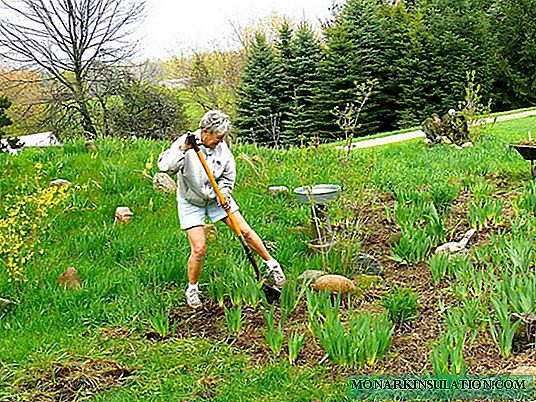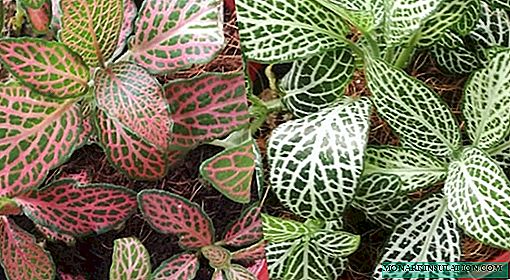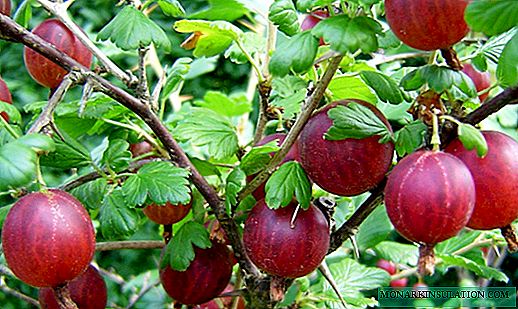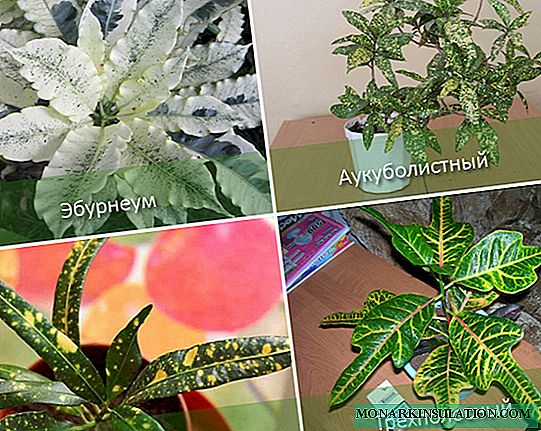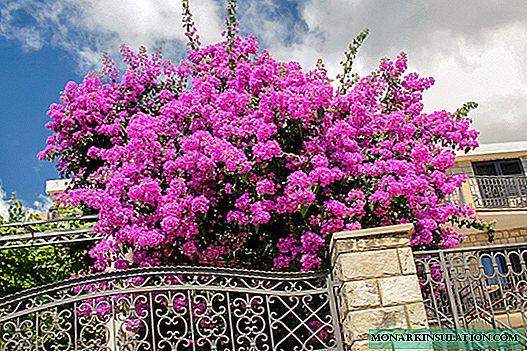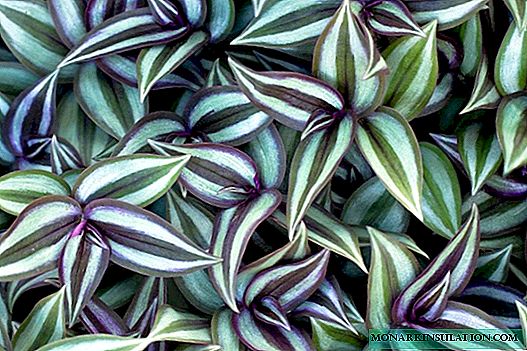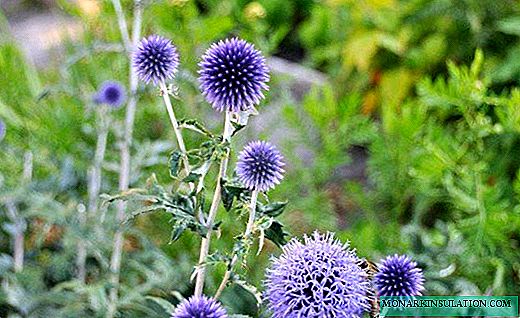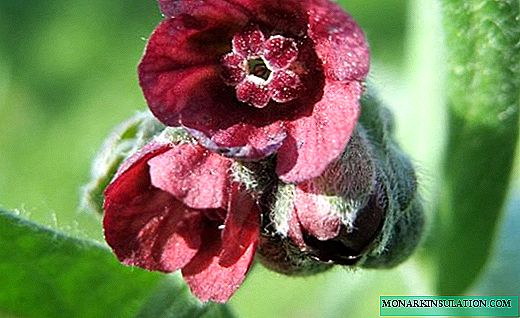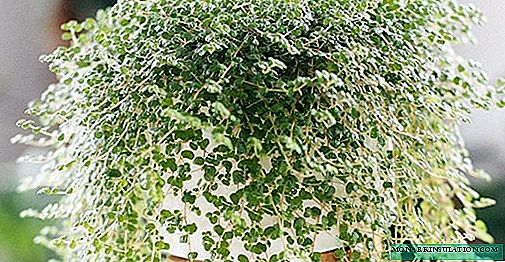Decoration of the garden, balcony, veranda - colorful bacopa. This plant has come to our gardens recently, but is already very popular with flower growers and decorators. The unpretentious resident of the tropics is well adapted to the climate and requires only plentiful watering and light. It grows in the garden as a groundcover, or in a cache-pot as an ampel decoration.
Bacopa Flower
Bacopa inhabits the wet marshlands of the tropics of America, Africa and Australia. Her love of moisture remained in the conditions of decorative cultivation. Bright sunshine is needed for its abundant flowering, and moist soil for the active growth of shoots.
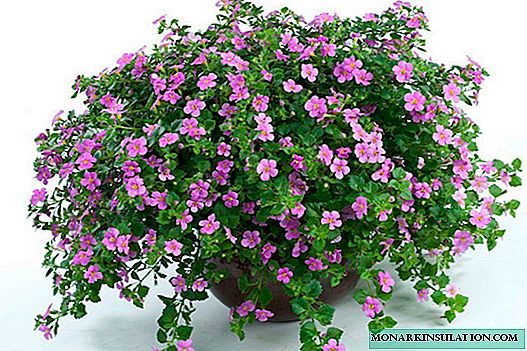
Pink bacopa
Small flowers cover the entire length of the shoots, which can grow up to a meter. Flowers of light tender shades - white, lilac, blue, violet, pink. Green or olive leaves are small, growing in pairs. Bacopa belongs to the plantain family.
Interesting to know! Other names for the plant are Vasor or Suter.
The green beauty grows well both on the open ground and indoors - on balconies and verandas all summer. The plant is unpretentious, active and healthy growth is supported by the observance of only a few conditions:
- Lighting should be plentiful, daily a flower should receive a dose of direct sunlight. Planting in open ground is necessary on sunny and non-shaded areas. Balconies and loggias also need good lighting.
- Abundant watering, but the soil should pass water well and not retain moisture in the roots of the flower. The soil in the pot must be constantly moist. For root respiration, it is important to loosen the soil after each watering, both in the pot and in the flowerbed.
- Fertilizer is necessary when propagating the flower, so that the roots become stronger during the period of active growth of greenery.
- The requirement for soil is only in friability and airiness. It should pass moisture and air well.
It's important to know! With a lack of light, the bacopa will not bloom, although it will grow. Many lovers of flowers are unknowingly in an empty expectation.
Diseases and pests with proper care practically do not affect the flower. Most often, the plant is sick during wintering in room conditions, when they allow the drying of an earthen coma, an increase in temperature or a decrease in the level of humidity.
Wintering
For proper wintering, the plant removes all shoots almost at the root. They dig a bush from the garden and transplant it into a pot (the bacopa will not tolerate frost). The pot is placed in a room where the temperature will be on an ongoing basis no higher than 10 degrees. Watering is reduced to a minimum, it is desirable that the earthen lump dry well after a warm period before the next watering. Any feeding, temperature increase, plentiful light are excluded.

Bacopa is a perennial bush, therefore, with proper winter care, it can wonderfully live for several years in a pot
Such wintering will preserve the plant as much as possible and in the spring after awakening, it can continue its growth and flowering in the garden or on the balcony.
If the temperature was not suitable for sleep, the plant loses its decorative effect, the shoots are drawn into thin threads, the leaves fade and thin. In this situation, you can cut last year's bush and get a lot of new healthy plants ready for planting in the spring.
Breeding
Bacopa is quite simple to propagate. A new plant can be obtained from seeds, cuttings or layering.
There are general rules for growing seedlings that need to be considered:
- Bacopa seedlings, unlike an adult bush, do not like direct sunlight. Abundant light can cause the death of young seedlings.
- The soil should always be moist, but without the accumulation of water in the bottom of the pot.
- When growing in a greenhouse - under a film, glass, it is important to accustom the plant to home conditions. In the future, with active growth, you need to take out young bushes in the open air. Without hardening, the plant will die after transplantation.
- Bacop should be planted in open ground or taken out in a pot in the open air not earlier than mid-May. A drop in temperature, or freezing on the ground, is detrimental to the delicate root system.
- During rooting and sowing seeds, it is important to maintain the temperature of the soil in the pot at 20 degrees. This is a thermophilic plant.
Bacopa - seed cultivation
It's important to know! Growing bakopa from seeds should begin in March. Seed germination is quite high, problems often occur during further care of the sprouts.
To grow a healthy and beautiful plant from bacopa seeds, you must:
- Mix peat and sand in equal parts as soil.
- Seeds should be sown by squeezing a little into moist soil.
- Cover the bowl with film or glass.
- Put in a warm place, in diffused light.
Sunflower seeds wake up after 14 days. Seeds germinate completely after four weeks.

Growing bacopa from seeds in peat pots
At this time, it is important to maintain a temperature of at least 23 ° C and moisten the soil. Top dressing must be done with diluted organic and mineral fertilizers alternately.
Cuttings
The most favorable period for cuttings of Bacopa begins in the summer - the end of August, for the winter procedure - January-April.

Growing bacopas by cuttings requires the preparation of material for planting.
Shoots can be divided into several parts, they take root well. There should be at least two nodules on the handle - one will be the rudiment of the roots, the other - leaves and shoots.
- On cuttings, cuttings need to remove flowers and unopened buds, lower leaves.
- For more confident rooting, the tips of the cuttings are treated with root.
- Root in a damp mixture of sand and peat by immersing the bottom nodule in the ground.
- Cover on top with film or glass.
Cuttings take root quickly, after two weeks you can evaluate the growth of the root system. Heat not lower than 23 degrees, light and moisture - all that is needed for a successful cuttings. It is important not to forget to fertilize the cuttings with diluted organic matter and mineral lure, to temper seedlings.
It's important to know! After the appearance of 2-3 pairs of leaves, pinch the shoot to obtain a lush and branched bush.

The active growth of new leaves and shoots with flowers suggests that the propagation of the bacopa by the cuttings was successful and the seedlings are ready for planting in open ground or a cache-pot.
Layering
This is the fastest and most reliable method of obtaining a healthy and already flowering young plant.
During the active growth of shoots, a pot of nutritious moist soil is placed next to the mother plant. Layers just need to be laid on top of the soil and secured with a metal or plastic stud.
Periodically checking for roots, loosen the soil in a new pot and moisten it. After the emergence of new shoots or a noticeable growth of rooted, layering can be split off from the mother bush.
The method is good in that the sprouts grow much faster due to nutrition by the maternal tap. And also a young bush grows immediately in the conditions of an adult flower and does not require additional fertilizer or hardening. You can grow layering from the beginning of the active growth of shoots.
Ampel Bacopa: Planting and Care
Frosts, a sharp drop in temperature will not leave young seedlings a chance to root. Bacopa has very delicate roots that grow almost on the surface of the soil, so they will suffer in the first place. After damage to the roots, they cannot be restored. You can save the stalk and try to root it again.

Ampel Bacopa
Before planting, seedlings must be hardened. A few days before planting, you need to leave pots on the street in the place of growth of the future bush - a balcony or a porch.
For planting in a cache-pot you need to prepare the soil. A mixture of peat, sand and turf in equal parts will be an excellent soil for ampelous flower. The pot must have a drainage hole. Expanded clay layer is not less than 4-5 cm, stagnation of moisture leads to decay of the root system.
Important! After planting the seedlings, you can once again feed it so that the roots take root faster and the plant goes into active growth.
After a rehabilitation period (14 days), the plant can be nipped, forming it in the form of a bush, weaving or falling flower.

Bacopa perfectly coexists in the same pot with other ampelous flowers, creating compositions of incredible beauty
Bacopa - planting and care in the flowerbed
Looking after Bacopa in the garden is just as easy. When selecting a place, it is important that it be well lit and protect the flower from the wind. In the open ground, the plant spreads, or shrubs - depending on how often it is pinched and cut.
If the soil in the garden is not too nutritious, you need to fertilize the soil before planting seedlings. This will provoke active growth and flowering of the future beauty. After planting, caring for the bacopa in the garden is simple:
- Abundant lighting will provoke it to active flowering, which occurs in this exot undulating. Inflorescences almost simultaneously ripen, open and wither. After a short break and sparse flowering, the next wave of even more violent flowering sets in.
- Watering should be frequent and plentiful.
- After watering, it is imperative to loosen the soil for respiration of the roots. This should be done very carefully, not forgetting that the roots of the bacopa are superficial and very fragile.
- Weeds clog the plant, it is important to get rid of them in the early stages exclusively by manual weeding.
Until the very first frost, Bacopa will continue its growth and flowering, and then will be ready to migrate for wintering in a pot. Such a seasoned and strong plant will make an excellent seedling for next year. And if Bacope arrange a full winter dream, then this bush will again become a full-fledged decoration of the garden.
Do I need to pinch Bacop
Pinching and pruning Bacopa stimulates its active growth and flowering. This procedure begins to be carried out on seedlings.
It's important to know! If the flower is regularly pruned, the bush will let out lateral and root shoots more intensively.
Pinching is done so that the shoot awakens its lateral kidneys. The bush will be dense and dotted with flowers. Flowers grow not only on the axils of the tips of the shoot, so pinching does not harm flowering at all, but only stimulates it.
If Bacopa is planted ampelous, cultivation should be accompanied by pruning. Cut off at least 1/3 of the shoot length. Cut shoots will be an excellent material for further propagation. When forming the decor, you can leave several shoots long, and cut off the others, creating interesting compositions.

Of the ampel bacopes, they often form a ball
On the ground, uncircumcised Bacopa will lay its shoots on the ground, but it is still worth pinching the beauty - the shoots will be thick and bloom more magnificent.
Diseases and Pests
Among Bakopa's diseases, the most common are gray rot and fungus. Occur due to too densely planted several flower bushes or waterlogging of the soil.
Yes, Bacopa loves moisture very much, but if it does not evaporate and sunlight does not reach the ground due to the dense greens, fungi and gray rot appear. Thin thick stalks should be thinned out to open the soil, do not forget to loosen it. It does not hurt to treat the shoots with fungicide.
Pests occur most often during indoor wintering, when humidity is low and temperatures are above 15 degrees. Enough heat and dry air for the appearance of sucking pests - aphids, whiteflies and spider mites. If the plant hibernates in not very suitable temperature conditions, it is important to inspect it for the timely detection of pests and their control. You can destroy parasites with 2-3 acaricide treatment procedures.
Bacopa is a wonderful decoration. In the garden she will create a flowering carpet, on balconies or loggias in the role of an ampel - this is an avalanche of long flowering lashes. Bacopa, the care and cultivation of which does not require special efforts, will delight its owner with greenery and color until the colds.

